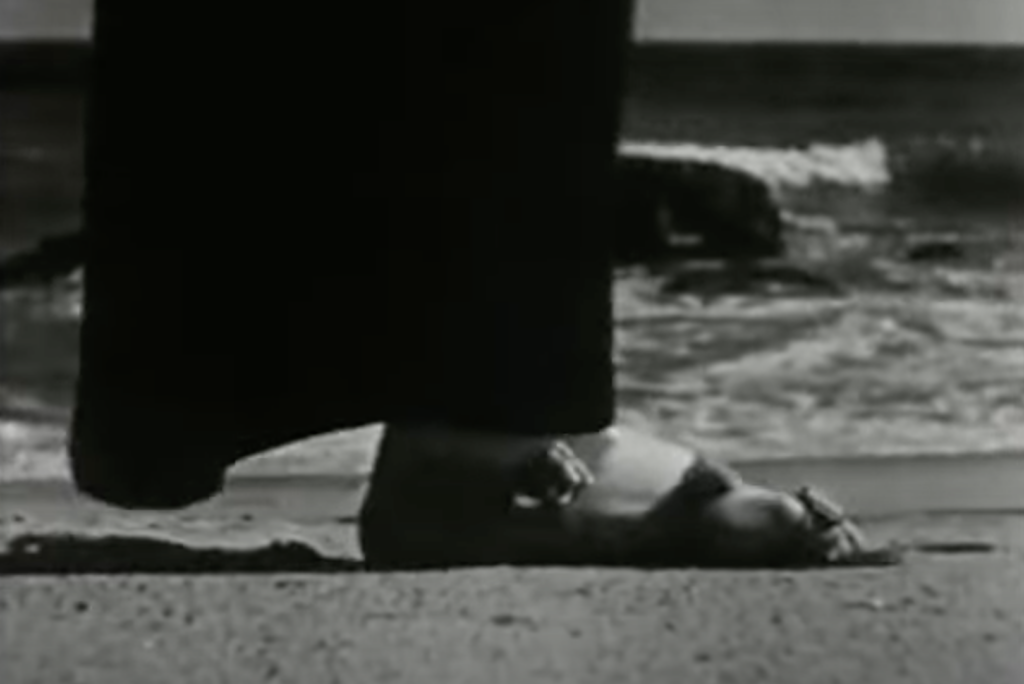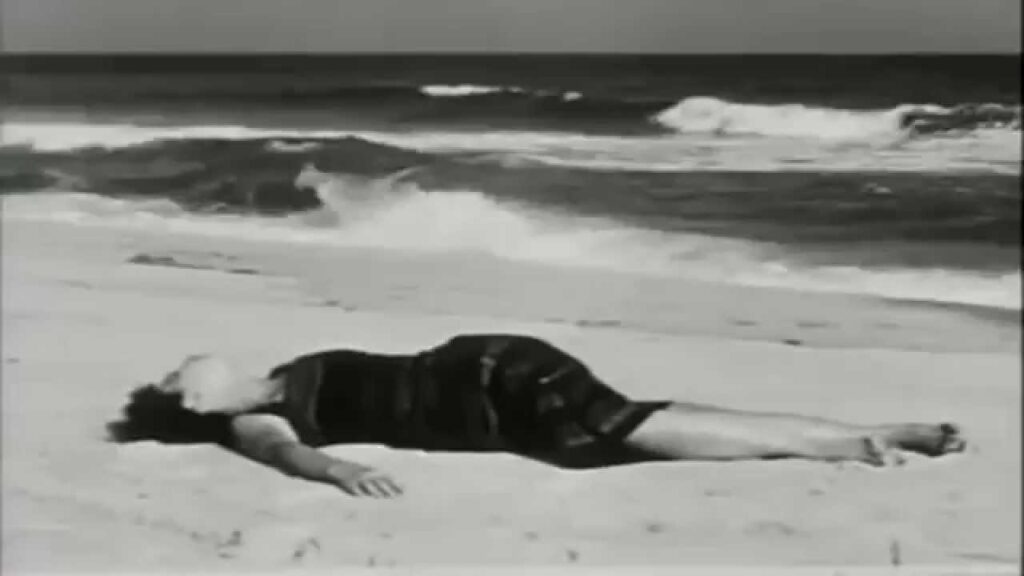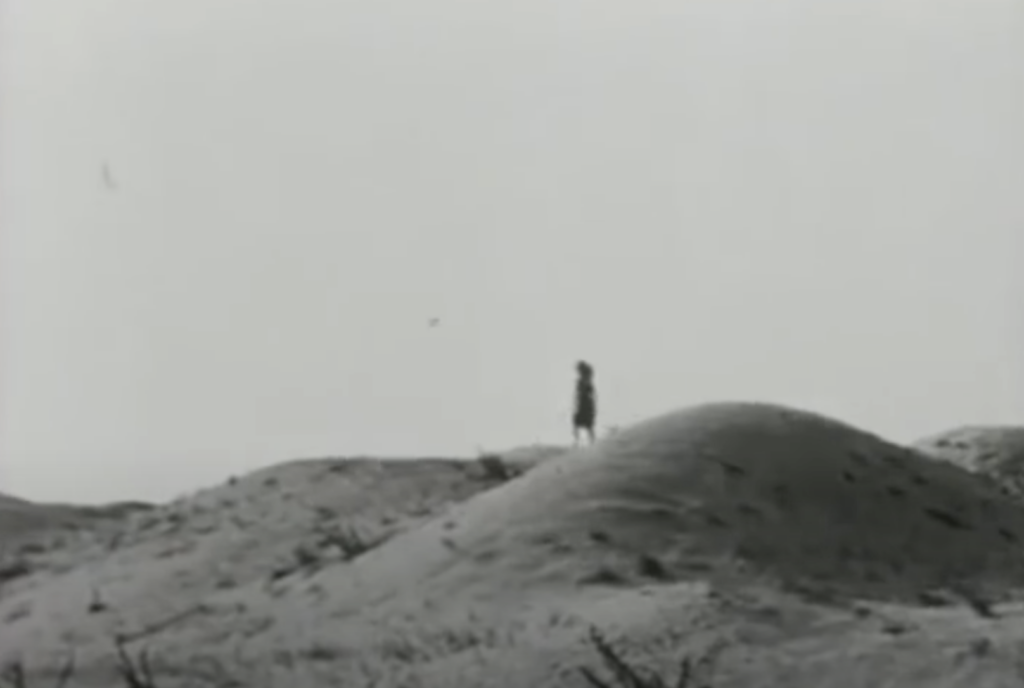| Olivia Fredrickson |

Meshes of the Afternoon and Other Shorts will play at the Trylon Cinema from Friday, February 14th, through Sunday, February 16th. For tickets, showtimes, and other series information, visit trylon.org.
The cinema of Maya Deren without a doubt captures not only the intrinsic reflections of her consistently shifting identity as a woman and artist, but also the labyrinthic inner workings of the self and psyche. Both of these crucial elements of her cinema and identity as an artist unfold as Oneiric poetic parables throughout her filmography. It is through an in-depth transgressive and transcendental analysis of her first two films, Meshes of the Afternoon (1943) and At Land (1944), that one can discover the intelligent and artistic vision and desires of Maya Deren within her dream-like cinema and ever evolving journey and rebirth of the self.
While two separate films, both Meshes of the Afternoon and At Land share many themes and motifs that feed Deren’s fetishistic focus on cinema as a dream (oneiric cinema) and the rebirth of oneself. One of the first comparisons made between the two films is that both of their titles are validated as poetic metaphors of the context and depth of the film. Meshes of the Afternoon is a vibrantly poetic metaphor for the film as it reveals the ideas of intricate connections, and a tight network of threads which is essentially all of the context and narrative of the film. The title also reveals the ultimate strategy of the film, which feverishly weaves the recurring and obsessive motifs involved in the film to a point of opacity. The motifs of entrapment, proliferation of the self, and the difficulty to move freely in a world lacking fluidity are all obvious themes that are strategically woven within the film. Lastly, the fragmentation of space and time become these various meshes that are fused together and eventually entrap the main character of Maya in an oneiric labyrinth. All of these are examples of how the simple, yet so deeply involved title of the film acts as an elegant poetic metaphor for the entirety of the film.
At Land also shares the commonality of its title being a magnificent poetic metaphor for which the content within the film is about and subject to. In opposition to the title and contents of the first film, the second film professes a strong connection to the earth, dirt, sand, and more importantly, nature as a whole. But contrary to the entrapping domestic space described as a never-ending labyrinth, the film seems to seal the mobility of the character as she is running on the open and inspiring space of the sea and the beach. The main character seems to have taken a path into her own direction as running along the sea and the sense of escape acquires a new dimension. As she is running into her liberation, our character holds in her clenched fist a coveted object a white chess piece, symbolizing her self liberation found in this natural space of elements captured by the title.
After my own first screening of Maya’s second film At Land, I was instantly led to believe that this film is undoubtedly a sequel to her first, Meshes of the Afternoon. Indeed, At Land invites us to take a glance back into the motif of the sea in its predecessor Meshes of the Afternoon. The end of the first film plays out as there is an enigmatic and alien-like looking Maya, whose gaze is deformed by insect-like bulging goggle eyes that will allow her, through a violent gesture of self aggression and liberation, to reach the sea as she breaks the mirror of self identity. This limit of self awareness allows Maya to gain a new dimension, which is the beach shore right on the edge of the naturistic sea.

This act of self liberation reveals itself as a gigantic operation of Maya, allowing herself to connect with the open landscape of nature and the sea. In a similar way, this act of self aggression may be read as necessary, since in this very moment, Maya steps out of the confinement of the apartment into the free world of nature and the sea. The end of Meshes seems to indicate a regression back into the motif of entrapment as Maya resembles a tragic immobility that resembles death. This horrific scene and ritual of her death also seems to connect back to the motif of the sea and her as some sort of sea creature, as her dead body and the floor around her are covered in seaweed. This vital connection to the sea must be read as a reconnection with another dimension that is desired by Maya, the afterlife, and may also appear to us as the motif of rebirth of identity and the soul.

The transcendental motif of rebirth from the end of Meshes of the Afternoon is undoubtedly validated by the opening scene of At Land, where Maya seems to appear as a mythical being, reborn from the sea. It is a rebirth comparable to that of the mythological birth of Aphrodite as she is also born from the sea and is known as the goddess of beauty, love, femininity and desire. Deren uses this as a transition into a focus on the motifs and themes of the female gaze, sensuality and femininity so heavily focused within both Meshes and At Land.
Maya Deren’s use of these themes quite literally propel the opening scene of her second film. She celebrates the power of nature and the sea as her body is unveiled by the crashing waves of the sea and pushed on shore. Maya’s body and shape are delicately revealed by the sensual impact and caressing of the water. She gracefully asserts her power as a combative, beautiful, and willing being, since her gaze is able to repel the waters and impose a new order and direction upon the waves of the sea as well. Via Deren’s evocation of Aphrodite’s birth and femininity, female sensuality is channeled with the utmost sensual power and a touch of humor as Maya progresses toward the beach to join the female chess players as she literally traverses a landscape that evokes the feminine features of the female body.

Deren’s Meshes of the Afternoon and At Land must be seen as radical and hyper theatrical declarations of independence where Deren’s use of shifting symbols and cinematic language delve us into the transgressive world of her own search for personal and feminine identity. Both films are impregnated by themes and the sense of struggle and sacrifice as the films are the ultimate oneiric journey of a woman who yearns to pursue her own sense of self and nourish her own identity. Without hesitation, Maya Deren’s Meshes of the Afternoon and At Land remain masterpieces of experimental and oneiric cinema, that beg to be deciphered through the female gaze and the ever so relatable labyrinthic experience of womanhood and the female psyche.
Edited by Olga Tchepikova-Treon

Pingback: ten thousand lakes and the Maya Deren Project: Creating Music for a Surrealist Masterpiece – Perisphere